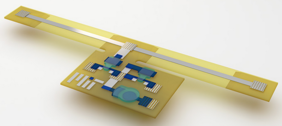The next decade is likely to see a profound change in terms of interaction between ourselves and the ambient. Objects are embedding more and more processing capability and this provides them with "awareness" that in turns makes interaction with us much more seamless.
However, to get to that point objects need to "sense" their environment and although we have plenty of sensors that can allow an object to "make up its mind" on what is going on in its environment the cost of these sensors and more than that the cost of embedding them in objects is often not affordable.
Here comes the work done by a research team at MIT that resulted in finding a way to create sensors that can be layered on objects like a skin.
The "skin" is 3D printed and embeds a variety of sensors, as required. One of the goals is to make sure that the various sensors can create networks, like it is the case in living beings. As a matter of fact the researchers sought inspiration in a beetle, the golden tortoise beetle, to see how it sensory pathways are interconnected with one another.
The 3D printer prints the electronics of sensors and interconnection on a plastic substrata that can be folded on the target surface once the printing is completed. So far they have created sheets of sensors that can respond to pressure changes and can change their colour (like the beetle...) when a certain type of pressure is detected.
The skin may cover robot, as well as buildings or bridges. Imagine a bridge that changes its colour when cars and trucks are stressing its structure... At first glance we can become aware that a bridge is tiring...
It is just an example but I feel it can give the idea of how our world will change in the next decade. Potentially we will perceive how objects around us "feel" (if I may use this word). That would clearly change our perception of our environment. Think about walking in a city whose building are talking to us, telling how warm, how full they are....







